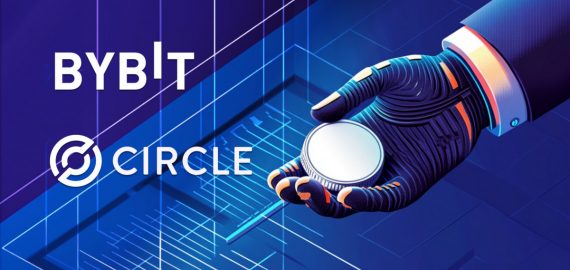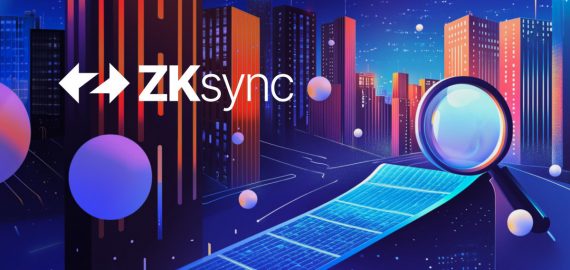The Power of Abstraction in DeFi: How Layer 3 Solutions Are Reshaping the Landscape


In Brief
Blockchain’s interoperability and usability improvements have improved decentralized finance, but fragmentation and liquidity issues persist. A seamless, secure flow of liquidity across chains and a simpler user experience are crucial for DeFi’s potential.

Blockchain has made a lot of advances in interoperability and usability, but the decentralized finance industry remains incredibly siloed, with DeFi protocols on different chains struggling to interact with one another. This is why value transfer remains limited and why the lack of liquidity is still such a problem in DeFi. Due to blockchain fragmentation, liquidity remains isolated on different networks, making it tricky to transfer value across chains.
Other problems in DeFi include the onboarding process, which remains incredibly challenging, with users forced to manage private keys, navigate mind-boggling user interfaces and understand complex transactions.
DeFi can only realize its potential of changing the world if it can solve these challenges and provide a seamless and secure flow of liquidity across chains, and a simpler user experience.
That’s why blockchain abstraction is being so hyped as a possible solution. It aims to solve these problems by “abstracting” technology and complexity away from users so they won’t even have to know what blockchain they are using. The idea with abstraction is to hide all of the technical details, including token bridging, consensus mechanisms, gas fees, and native tokens, from DeFi users. If it works, they’ll be able to access any DeFI application from a single wallet with just one cryptocurrency token without any headaches.
Understanding Abstraction in DeFi
Abstraction layers exist almost everywhere in traditional computer systems. They’re what makes something like using the internet a relatively trivial experience. For instance, the task of sending an email might seem simple, but in fact, doing so requires numerous complex processes and involves various different protocols. However, all of these details are abstracted away thanks to platforms like Gmail, so the user only has to worry about writing their message, entering the address of the recipient, and clicking send.
In DeFi, chain abstraction intends to solve the fragmented user experience that stems from the existence of numerous blockchain networks. Because there are so many networks in DeFi, they create tons of befuddlement for end users, who have to engage in costly and time-consuming cross-chain transactions, hold multiple tokens to pay the gas fees of different networks, and so on. These headaches clearly hinder DeFi’s adoption as very few people are inclined to take the time to work out how to do all of the above steps.
In a blockchain-abstracted world, the user won’t have to worry about any of this. They’ll connect to a dApp through their wallet – any wallet – and then use a single interface to sign and confirm their transaction, which can span any other blockchain network. Under the hood, the transaction will be processed and settled instantly.
The Evolution of Blockchain Layers
The key to blockchain abstraction is held by what’s known as “Layer-3 networks”, which perform the role of uniting every blockchain into a single network. Blockchains such as Ethereum are known as “Layer-1” networks, which are the foundational network itself, while “Layer-2” networks are those built on top of these L1s, ostensibly to allow them to scale by offloading transactions and processing them in batches off-chain, so they can be settled as one transaction on the L1.
Layer-3s are the next evolution of blockchain scaling solutions. They sit atop existing L2s and provide greater interoperability between networks and “application-specific” functionality. As such, L3s are extremely customizable and can be made to suit each developer’s specific needs, paving the way for them to solve challenges around privacy and rapid transaction speeds while inheriting the security of the underlying L1.
With L3s, it becomes possible to make different blockchains interoperate with one another and create more complex applications that can interact with any other dApp, without any problems associated with fragmented liquidity. They can also dramatically simplify the user experience.
Advantages of L3s
L3s provide developers with a lot of advantages that combine to abstract away the complexity of interacting with blockchains. For instance, an application-specific L3 can be optimized specifically for the needs of the underlying dApp, improving its performance at scale. They enable greater dApp customization too, so the developer can create and implement their own consensus mechanism, governance model and economic incentives.
In terms of interoperability, L3s can streamline transactions across any blockchain with a standardized protocol that provides seamless communication and data exchange. They also enhance privacy and security by isolating each dApp from the underlying blockchain network, while developers can implement specific privacy features or encryption standards for their dApps. Finally, L3s support much faster innovation, as developers will find it easier to iterate and deploy new features and optimizations without being constrained by the underlying L1 network.
Layer 3 Solutions Transforming DeFi
Arbitrum Orbit
Aribitrum Orbit has emerged as one of the most innovative L3s, providing developers with a framework to launch new chains atop Arbitrum, which is already one of the most popular L2s on Ethereum. Users can create customizable, application-specific L3s that settle on the Arbitrum L2 and, in turn, ultimately settle on Ethereum itself.
With Arbitrum Orbit, developers can deploy highly configurable instances of Arbitrum’s Nitro technology stack, which helps them optimize their dApps for exact use cases and business needs. It provides a high degree of versatility, enabling a tailored approach to dApp development while inheriting the properties of Ethereum’s base layer and security assumptions, with superior interoperability and simpler user interfaces.
zkSync Hyperchains
Another popular L3 solution is zkSync’s Hyperchains, designed to enhance interoperability and scalability on Ethereum. Hyperchains utilize the ZK Stack, which is a modular framework for creating customized networks for individual applications. These networks can be either L2s or L3s, and they’re highly comparable and interoperable, supporting instant liquidity transfers and seamless interactions with protocols across chains.
zkSync’s focus on recursive scaling and ZK-proofs ensures strong privacy and scalability, with the ability to customize aspects such as privacy, transaction speed, and data availability, making Hyperscale L3s an ideal platform for DeFi dApps.
Orbs
Orbs stands out with its proof-of-stake consensus mechanism, creating a kind of intermediary execution layer for L2 networks. This positioning enables Orbs to enhance the capabilities of dApp’s smart contracts, enabling more complex logic and scripts to support abstraction. It also introduces innovations such as dTWAP and dLIMIT orders for decentralized exchanges, as well as the Liquidity Hub, which enables DeFi protocols to tap into vast reserves of liquidity across the entire ecosystem.
Ultimately, Orbs’ technology provides dApp developers with a highly scalable and customizable environment for their dApps, with the freedom to implement their own economic systems and governance structures, while enhancing scalability.
Real-World Applications of Layer 3 Abstraction in DeFi
Layer-3 abstraction has big implications for DeFi. Traditional dApps focused on decentralized loans and yield farming have always been extremely complex, with users required to deposit funds into a smart contract so they can be accessed by an algorithm that automatically opens and closes the user’s trading positions.
L2 networks process these actions one step at a time, but with smart contracts powered by an L3, it becomes possible to execute multiple transactions simultaneously, decreasing the complexity of these actions for users.
This is because L3s have more advanced functionality. For instance, using an Orbs L3, it’s possible to move funds across multiple liquidity pools and use them to enter a leveraged trading position or as a collateral deposit to take out a loan. With Orbs, these actions can be performed in a single transaction, with reduced complexity and fees, across any blockchain network it supports.
It all adds up to much simpler DeFi applications with faster transaction speeds, lower fees, and minimal complexity. Users will benefit from almost instantaneous transaction settlements, meaning dApps are more efficient and responsive.
Other benefits include lower fees because complex transactions can be bundled into just one. Moreover, dApps built on Orbs can create their own fee models and economic incentives, resulting in more cost-effective transactions that deliver greater value to end users.
Other benefits of L3 abstraction in DeFi include the possibility of portable decentralized identities that can be used across any blockchain, while the reduced transaction complexity and costs could enable more advanced trading strategies and order execution.
Challenges and Considerations
L3s are an exciting development, but there are some challenges that need to be overcome. One of the most pressing concerns is security. Because each dApp utilizes its own L3 network, developers must ensure they have robust security systems in place to protect against vulnerabilities. They cannot just rely on the strength of the underlying blockchain’s security model, so they must create and maintain a secure infrastructure for their dApps. This includes audited smart contracts and mitigations for other attack vectors.
The industry must also increase awareness of the capabilities of L3s, which is challenging considering the strong network effects and momentum of existing blockchains such as Solana, Polkadot, and Polygon, which already position themselves as vastly more scalable platforms than Ethereum.
Still, L3s are rapidly gaining momentum of their own, and provide a tantalizing opportunity to further evolve the DeFi ecosystem, giving developers the opportunity to create more user-centric dApps that are more accessible to newcomers in the industry.
The Future of Abstraction in DeFi
At present, getting into DeFi involves a steep learning curve, with new users required to learn all about different wallets, private key storage, different dApps, complex UIs, bridging assets, and more. With L3 blockchain extraction, we can eliminate these hassles, making the DeFi ecosystem as accessible as traditional finance is in Web2.
In a nutshell, DeFi abstraction can dramatically simplify DeFi transactions, condensing multiple steps into one without the user needing to know what blockchain they’re using. There’ll be no more bridging or worrying about having enough tokens to pay gas fees, and liquidity fragmentation will become a thing of the past, ensuring users get much better prices for token swaps, even when using larger sums. Moreover, users will be able to keep all of their funds and interact with every kind of DeFi dApp from a single wallet.
DeFi abstraction will also benefit developers, making it easier for them to build dApps that can interact with any network without writing code for each blockchain or worrying about the complexities of bootstrapping liquidity to get started.
As a final benefit, abstraction can simplify the convergence of DeFi with traditional finance, making it simpler for users to get started using any dApp by depositing fiat currency directly into DeFi protocols.
Compared to Web2, which essentially runs on autopilot, Web3 and DeFi are more akin to a minefield, and there’s an urgent need for abstraction to come and save the day.
While L3s may not be the last word in DeFi architectures, they currently represent the state-of-the-art, and already they’re having an enormous impact in terms of easing blockchain congestion, simplifying access and streamlining the flow of liquidity across the ecosystem.
They enable new users to access dApps with far fewer headaches than before and are fast becoming the backbone of the DeFi, ensuring users’ funds can flow to wherever they’re needed without anything blocking their way.
Disclaimer
In line with the Trust Project guidelines, please note that the information provided on this page is not intended to be and should not be interpreted as legal, tax, investment, financial, or any other form of advice. It is important to only invest what you can afford to lose and to seek independent financial advice if you have any doubts. For further information, we suggest referring to the terms and conditions as well as the help and support pages provided by the issuer or advertiser. MetaversePost is committed to accurate, unbiased reporting, but market conditions are subject to change without notice.
About The Author
Victoria is a writer on a variety of technology topics including Web3.0, AI and cryptocurrencies. Her extensive experience allows her to write insightful articles for the wider audience.
More articles

Victoria is a writer on a variety of technology topics including Web3.0, AI and cryptocurrencies. Her extensive experience allows her to write insightful articles for the wider audience.

















































